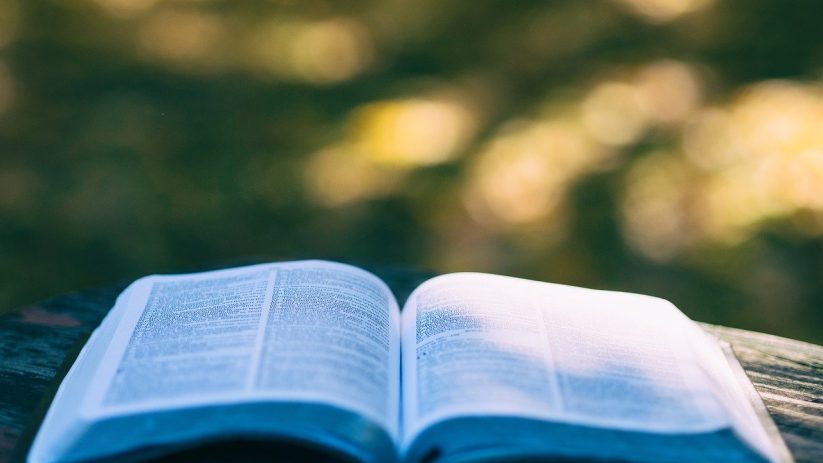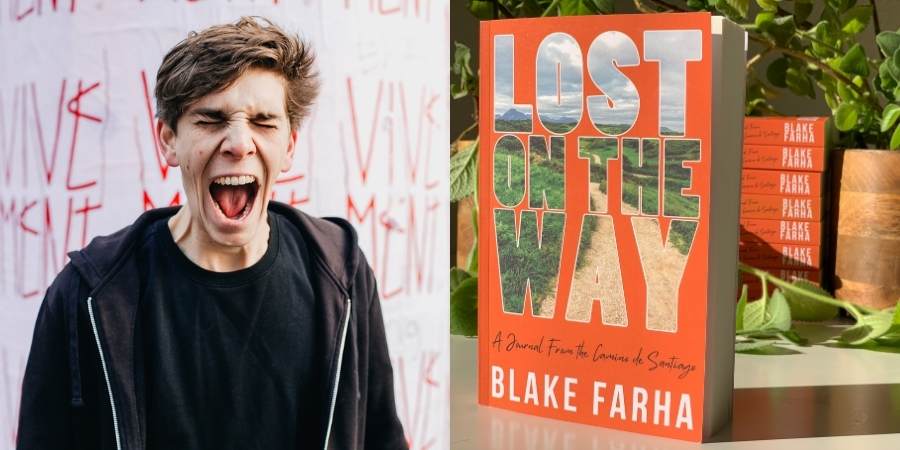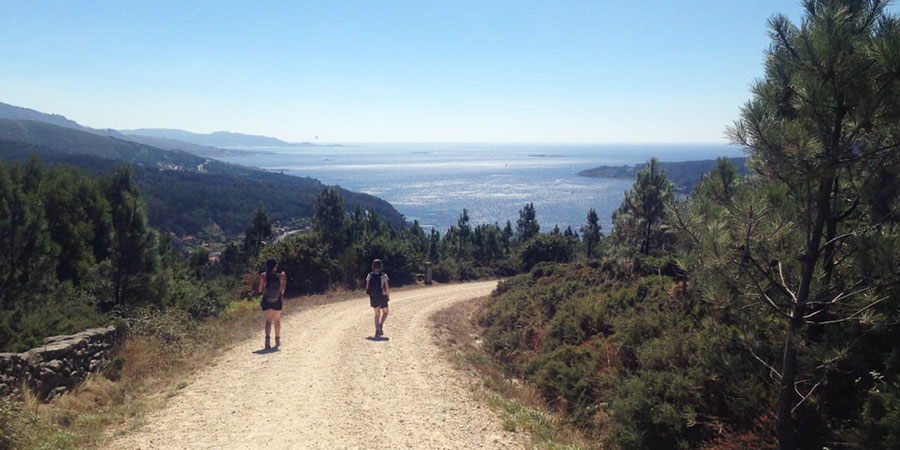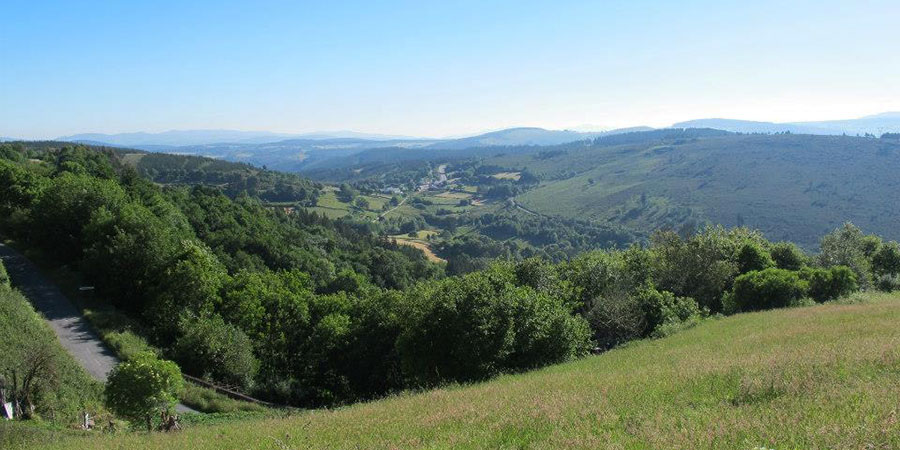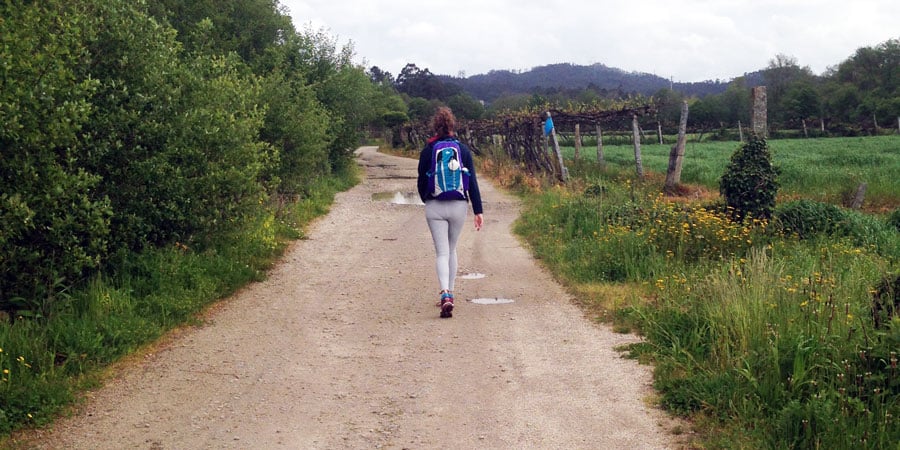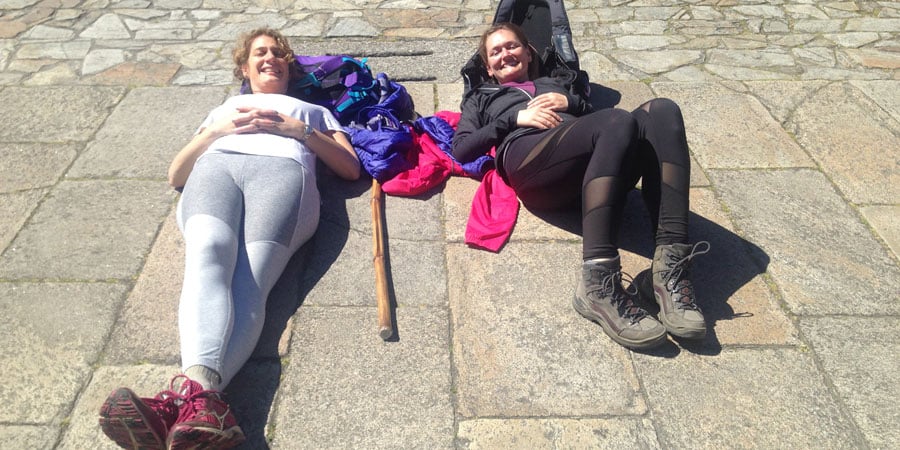“Lost on the Way,” is a journal. My personal journal from the Camino, completely raw, unedited, and exactly as I found the ink on the dog-eared pages of the cheap notebook in which I wrote every day on the way to Santiago. It’s the amalgamation of my thoughts, memories, experiences, and adventures as I lived and experienced them on the way to Santiago. ~ Blake Fahra
We are always happy to hear about a new book or journal from the Camino de Santiago.
It is a way for us to virtually experience the Camino while we await the return of the travel.
Journal from the Camino: Q & A
A new journal from the Camino we are excited to read is “Lost on the way” by Blake Fahra.
We caught up with Blake this month to ask him a few questions about his journal and how the Camino helped him to find his way:
Q1. Tell me a little about yourself
I’m an artist, musician, and performer.
Born in Wichita, Kansas in 1986, I grew up in Dallas, Texas, where I graduated with a degree in Economics from the University of Texas at Dallas. I would later find out that I’m not the stuff economists are made of, and it’s taken me 16 years of adulthood to finally realign myself with the things that make my heart truly sing.
Fluent in four-and-a-half languages (my Danish has gotten a bit rusty), I’ve spent my adult life hopping from country to country and jumping from career to career. Struggling Singer/Songwriter, Recruitment, Web Development, Teaching English in Korea, France, and the U.S., Managing a Frozen Yogurt Shop, Teaching Improv Comedy to companies like Google and Babbel. It’s been a whirlwind.
I currently live in Berlin, Germany, where I’ve lived for the past 7 years. I’ve finally given up chasing that silly life I was led to believe was the “right way” to live (you know, the one where you get a “real” job, make money, and move up the ol’ corporate ladder) and devoted myself (though not without my own misgivings) to my creative pursuits including writing and producing music and videos, voice acting, improv comedy, and podcasting.
“It’s a window into a lost soul on a journey to self-discovery; a portrait of gorgeous landscapes, human connections, and those questions which don’t seem to have any answers.”
Q2. Please introduce your book in your own words
In this uncensored travel journal, I chronicle a 600-mile sojourn on foot through the Spanish countryside. Each journal entry invites readers deep into the inner workings of my heart, mind, and spirit at the end of every stretch, as day by day, mile after mile, the Camino, the pilgrims I meet, and the time for reflection bestow upon me countless insights on depression, anxiety, self-worth, and finding peace.
It’s vulnerable and humorous. It’s evocative and earnest. It’s a window into a lost soul on a journey to self-discovery; a portrait of gorgeous landscapes, human connections, and those questions which don’t seem to have any answers.
Q3. Why did you choose to walk the Camino?
Isn’t there just something enchanting about the Camino? From the first time I heard about it in 2012, I was completely transfixed by it. When I set out on the Camino, I had three things in mind: adventure, perspective, and mental stability.
The Camino called to the outdoorsmen in me. What an adventure it sounded like! I could imagine little more exciting than spending 30 days traipsing through the Spanish countryside, day after day. Now that I’ve done the Camino, I can still imagine few things as exciting as thru-hiking!
When I left for the Camino, I had just been unexpectedly laid off. I had no idea what I was going to do next, and there was really no beacon on the horizon toward which I focus my efforts. I was completely lost. I possessed no semblance of a roadmap, my only guide the knowledge that wherever I had come from was no longer an option. I hoped that the time on the Camino would help me to devise a new path for myself; that the time away from my daily life would reveal to me that much sought-after beacon on the horizon.
More than anything, the Camino is a spiritual journey, and that was what called to me most. I’ve struggled my entire life with crippling depression and anxiety. When I left for the Camino in 2017, I was in therapy for the 2nd time in my life, and my mental health, though on the mend, was at a near all-time low. Of the many things, I set out on the Camino to find, first among them was hope. Hope that things could get better. Hope that I could get better. Hope that all the things my therapists and I had worked on together could actually be cemented in my mind, and become lifelong habits that would continually serve to bolster my mental health.
“I wanted the chance to share these lessons and insights which the Camino bestowed upon me with anyone who might benefit from them, particularly people who suffer from depression, anxiety, and nagging feelings of low self-worth.”
Q4. Many pilgrims walk the Camino but not everyone writes a book. What inspired you to write a book about the Camino?
To be honest, I kind of feel as though I haven’t written a book. Books have plots and well-thought-out storylines, symbols, and character arcs. Authors sit down and ponder and put pen to paper (or finger to keyboard) before revising, editing, and doing it all over again.
“Lost on the Way,” is a journal. My personal journal from the Camino, completely raw, unedited, and exactly as I found the ink on the dog-eared pages of the cheap notebook in which I wrote every day on the way to Santiago. It’s the amalgamation of my thoughts, memories, experiences, and adventures as I lived and experienced them on the way to Santiago.
Initially, the decision to keep a journal was my therapist’s idea. It’s well-held among psychologists that writing things down is a powerful way to prevent the ruminating that can often lead to a downward spiral into the abyss of depressive episodes, as well as aid in filtering and processing thoughts and feelings that come up. This journal was simply a tool to aid in solidifying the mental stability I’ve spent most of my adulthood working to achieve. It was never meant to be published.
Yet, and I suppose here is the answer to your questions, when I read through my journal after I finished the Camino, I realized how much I had learned, how much the Camino imparted on me, and how incredibly fortunate and privileged I was to have been able to walk the Camino. I decided to publish it because I wanted the chance to share these lessons and insights which the Camino bestowed upon me with anyone who might benefit from them, particularly people who suffer from depression, anxiety, and nagging feelings of low self-worth. I felt it was in keeping with the Camino spirit: giving and sharing whatever you have with anyone you meet who is in need.
I know there are countless people in need of insight, companionship, motivation, inspiration, encouragement, humor, humility, and adventure. The Camino gave me all these things, and I wrote this book to pass those on to anyone who is in need of them.
Q5. Tell me about the Camino route you chose and why? What were the highlights along the way?
I walked the Norte to the Primitivo, the Primitivo to Santiago, then Santiago to Muxia to Finisterre then took a bus to Porto and walked 37km in a day on the Portugues to Povoa de Varzim.
Initially, I intended to walk the Frances. But only a few days before I hopped a flight from Berlin to Paris, and bus from Paris to St. Jean-Port-de-Pied, I spoke with a friend of mine who had been on the Camino twice. She all but begged me not to walk the Frances. She assured me that if it was solitude and time alone for reflection I was seeking, I would find none of it on the Frances.
I believe her exact words were, “It’s basically just Disneyland.” She recommended I take the Norte, and so I did, and I’m so thrilled I did.
The Primitivo was also a surprise. In fact, it was the idea of the people in the beautiful little Camino family I assembled along the way to take the Primitivo. They were saying they wanted MORE nature, MORE mountains, MORE solitude, MORE rugged Camino. That all sounded great to me, especially after all the asphalt and pavement and highway found on the Norte. It was a magnificent decision, and easily the most exciting part of the entire Camino.
Highlights:
On the Norte, you’ll find yourself walking right along the sea, sometimes on the edges of cliffs high above the water slamming into rocks a hundred meters below, day after day after day. It’s mesmerizing. Many of the albergues I stayed in were only a stone’s throw away from the beach, so after getting settled in the albergue, I’d go swimming in the ocean for a few hours. This was heaven after a long day of hiking.
The pintxos found throughout the Basque Country will blow your mind. And walking all day means that you have a limitless appetite, so you’ll have no trouble eating seemingly endless quantities of them.
The Primitivo is just what its name suggests: Primitive. The mountain passes are simply astounding. The Camino was so quiet and beautiful, and the pilgrims on it were very chill, and there was no rushing from one albergue to the next. Everyone woke up slowly, and peacefully, and there was no rush. It was a much more familial vibe among the Pilgrims on the Primitivo than I found anywhere else along the Camino.
“I think I really needed to see that there is the possibility of a life where I wake up with joy in my heart rather than fear. Knowing that has really given me hope for the life ahead.”
Q6. You say you found peace on the Camino. How did the Camino help you find peace?
The Camino gave me a chance to break away from the hustle and bustle of my daily life, which allowed me to simply focus on all the things my therapists and I had been working on.
In my experience, one of the roadblocks to improving mental health is that it’s very difficult in our daily lives to create the space needed to focus on changing mental habits and behaviors we have developed to cope with the world, which are often the very things that are detrimental to our mental health.
The Camino gave me a little bubble, a tiny vacuum, a microsum of my life in which to focus on exactly that: changing habits and behaviors that don’t serve me well. In my everyday life, I’m in too much of a rush to change them. I rely on them because they get me through the day, but that doesn’t mean that they serve me or my mental health well.
On the Camino, I had the time to notice these behaviors and habits as they cropped up, each and every time take a minute or two or thirty to make the decision to alter them. And for me this is what good mental health is: a process of noticing how I react to the world around me, stopping myself from indulging in that behavior, and making an active decision to behave or react differently. Over time, this process becomes faster and faster until eventually, we’ve completely changed the way we react to the world around us.
The Camino provided the buffer needed for this process to happen with far fewer impediments.
Plus, the Camino is just really exciting and really fun, which itself is so revitalizing. Being excited to wake up and live the new day before me on the Camino showed me that it was possible to feel that way: That I could wake up and feel good, excited, and pumped for the day ahead, as opposed to just terrified of it. As they say, “if you can’t see it, you can’t be it,” and I think I really needed to see that there is the possibility of a life where I wake up with joy in my heart rather than fear. Knowing that has really given me hope for the life ahead.
“Whatever Camino you’re on, it’s the right one.”
Q7. What overall effect has the Camino had on your life?
I think it’s important to note that the Camino will not fix anyone. Contrary to what Hollywood would have us believe, the Camino, and adventures like it, many of which are finding their way into films and television, are in no way a magic pill or a silver bullet. It won’t suddenly make all your problems go away. You won’t magically come back a different person. You’ll come back the same person you were when you left, but perhaps with a bit more perspective, a little more experience, and a few extra life lessons in your toolbox to use at the appropriate moments.
And it’s these things that, if acquired and used appropriately, will slowly but surely begin to have an impact on the way you live your life.
With that said, the Camino gave me many tools, and every day on the Camino was a chance to get better at using those tools so that I could more skillfully use them when I returned to my normal life, or as one of my hospitaleros called it, “El Verdadero Camino. (the real Camino.)”
I use these tools all the time, nearly every day. Tools like: Go slower. Take it one step at a time. Stop and smell the roses (or, more accurately, stop and eat an apple while you look at this amazing landscape). Yes, you can. You’re in pain, accept it. No, you can’t, and that’s okay. Yes, there’s a fork in the road, and you can only choose one. Make peace with it. Have faith, the Camino shall provide. Stop what you’re doing and help this person. Whatever Camino you’re on, it’s the right one.
Q8. Tell our readers what they will learn by reading your book.
There are three simple, yet powerful things that I hope “Lost on the Way” will show readers.
You’re not alone.
The Camino provides.
There is always, always hope. You just need to know where to look.
Q9. Do you plan on returning to the Camino?
I would absolutely love to return to the Camino. It’s kind of a surprise that I haven’t done it already! I don’t have a concrete plan as yet, but I’m certain I’ll do it again. It was nearly impossible to leave it in the first place!
I’d really like to go on the Camino in winter, and see what that’s like.
And really, I just want to spend more and more and more of my life thru-hiking, whether it’s on the Camino or elsewhere.
I can’t really imagine a better way to spend my time than walking, taking in nature, enjoying the company of friends and strangers, and then doing it all again the next day.
To find out more about Blake’s Journal from the Camino “Lost on the Way” visit:
If you would like to talk with us about your upcoming Camino plans, send us a message on the form below:
